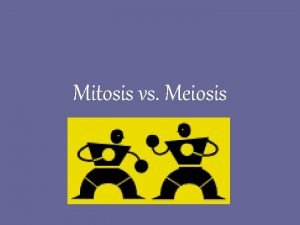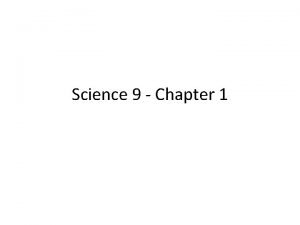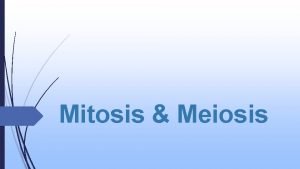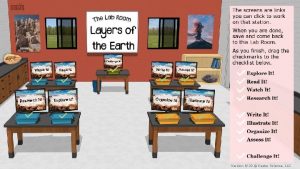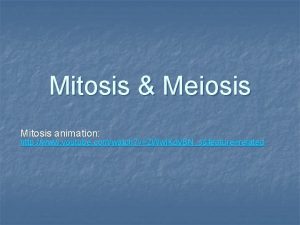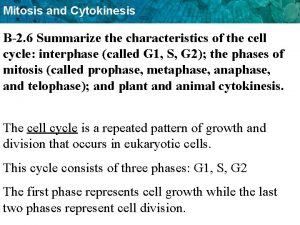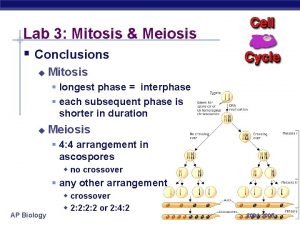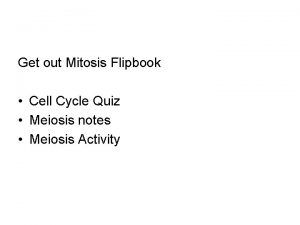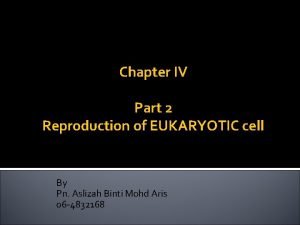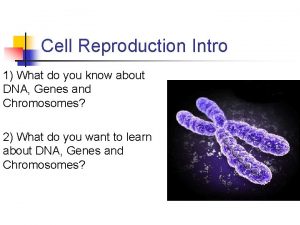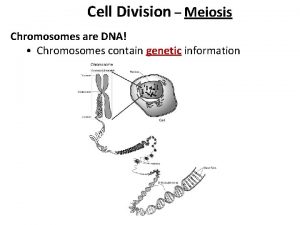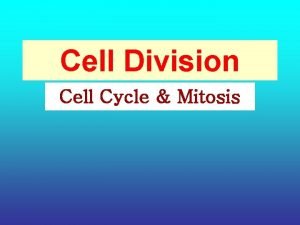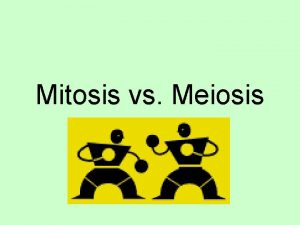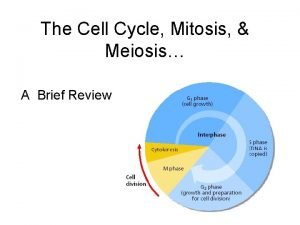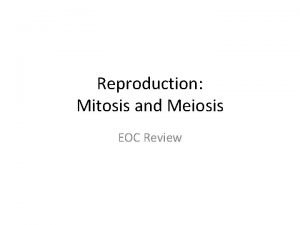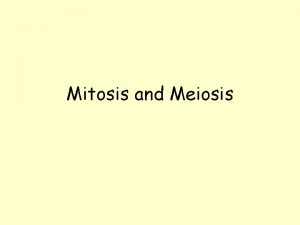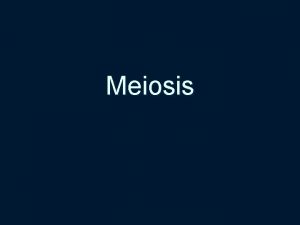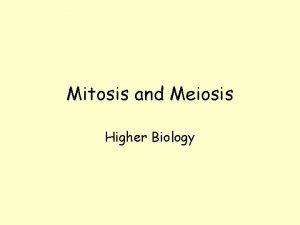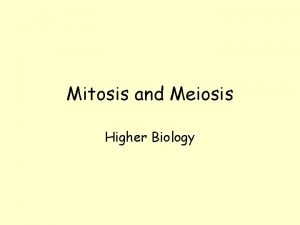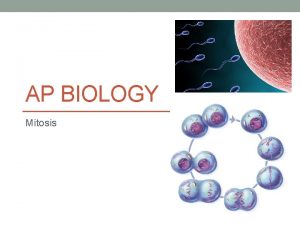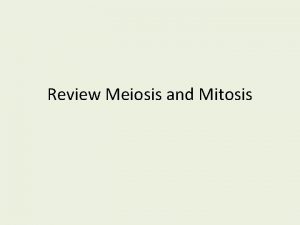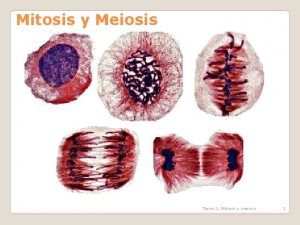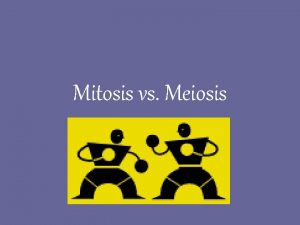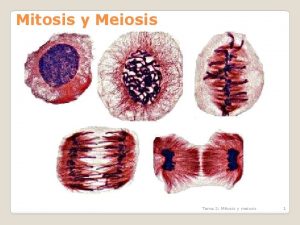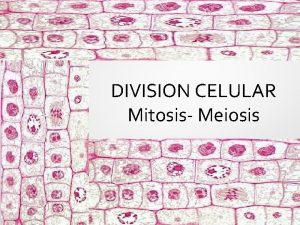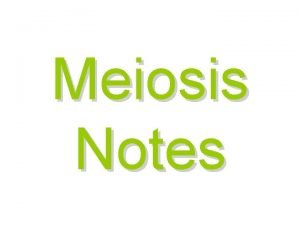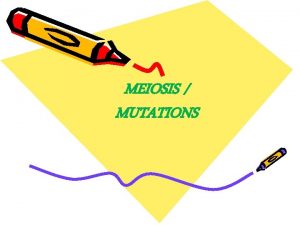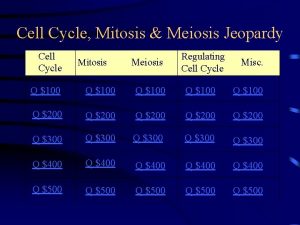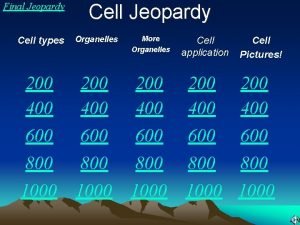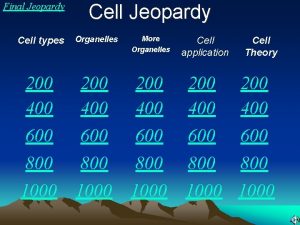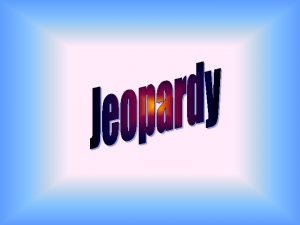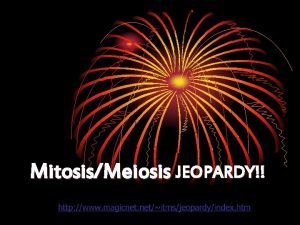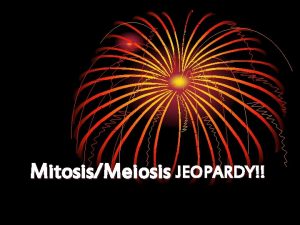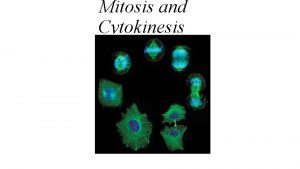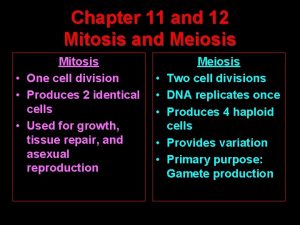FINAL JEOPARDY Jeopardy Mitosis and Meiosis Organelles and



























- Slides: 27

FINAL JEOPARDY Jeopardy Mitosis and Meiosis Organelles and Functions Protein Synthesis DNA and Genetics Evolution 100 100 200 200 200 300 400 300 300 400 500 100 500 400 500

BACK 100 Question-1 What is PMAT? Prophase, Metaphase, Anaphase, Telophase – Stages of Mitosis.

BACK 100 Question-2 DNA is located in the … Nucleus

BACK 100 Question-3 Name 2 differences between DNA & RNA Any of the following: 1. Is single stranded 2. 3. Is shorter Uracil Replaces Thymine 4. Ribose replaces deoxyribose 5. 2. x

BACK 100 Question-4 What would the letters look like for an individual that is Heterozygous? Hh

BACK 100 Question-5 He created the phrase “survival of the fittest” Charles Darwin

BACK 200 Question-1 Mitosis creates genetically ______ cells. But Meiosis Different creates Identical, genetically ____ cells.

BACK 200 Question-2 Where is ATP created? Hint: ATP is energy the The Mighty Mitochondria cell uses. The Powerhouse of the Cell

BACK 200 Question-3 What form of RNA carries the sequence required to construct a protein? (messenger) m. RNA

BACK 200 Question-4 If a father has AB blood type, and a mother has B. What blood types could their children have? A, AB, B Hint: Mom could be BB or BO.

BACK 200 Question-5 Formation of a Speciation new species?

BACK 300 Question-1 During the Cell Cycle, when. Sdoes DNA phase – get replicated (copied)? S stands for Synthesis of DNA (to make)

BACK 300 Question-2 This organelle stores enzymes and helps Lysosome digest material for the cell.

BACK 300 Question-3 A change in the bases of DNA can create a change in the order of amino acids that make a protein but it still functions properly. Silent Mutation

DAILY DOUBLE!!! 300 Question-4 BACK Who is the father of Gregor Mendel – genetics and what did he Pea study? plants Need both names said correctly.

BACK 300 Question-5 Changes in Allele Frequencies. Genetic Drift Examples include Bottleneck Effect, Founder Effect

BACK 400 Question-1 When homologous chromosomes exchange pieces of chromosome. Happens during Prophase I of Meiosis. Crossing Over Increases Genetic Variation!!!

BACK 400 Question-2 In the Chloroplast, sunlight (light energy) is captured and converted into a GLUCOSE – Sugar chemical is (if the word energy. ends in -ose, What it’s a sugar!) this chemical energy in the form of?

BACK 400 Question-3 Where in a eukaryotic cell is RNA made? Nucleus

BACK 400 Question-4 Alleles that are neither dominant or recessive are called: _________. If the heterozygous is a blend of both types. (red flower x white flower = pink flower offspring) Incomplete Dominance

BACK 400 Question-5 These are features or parts of different organisms that have Homologous similarities between them. It leads to. Structures the idea of a common ancestor. Think of the arms of a human, the arm of a bat, arm of a whale.

Daily Double!!!! 500 Question-1 BACK If an organism’s diploid number is 12, 6 Chromosomes what is its haploid number?

BACK 500 Question-2 What organelle is important in bringing the t. RNA and m. RNA molecules together? Ribosome

BACK 500 Question-3 What form of RNA carries an amino (Transfer) acid? t. RNA

BACK 500 Question-4 What form of RNA makes ribosomes? r. RNA (Ribosomal)

BACK 500 Question-5 The process of evolution is due to ________. Traits are passed on to offspring and future generations, because those traits benefit the organism allowing them to survive and reproduce. Natural Selection

` Give 6 of the 8 Characteristics of Living things…. The main concepts of Biology! 1. All living things are made of cells 2. All living things have DNA 3. All living things reproduce (ASEXUAL, SEXUAL) 4. All living things respond to a stimuli 5. All living things need energy to carry out life processes (METABOLISM) 6. All living things maintain internal conditions (HOMEOSTASIS) 7. All living things grow and develop. 8. All living things change over time. (EVOLUTION)
 Cell cycle
Cell cycle Mitosis jeopardy
Mitosis jeopardy Animal and plant reproduction venn diagram
Animal and plant reproduction venn diagram Venn diagram about mitosis and meiosis
Venn diagram about mitosis and meiosis Write difference between mitosis and meiosis
Write difference between mitosis and meiosis Kesler science answer key
Kesler science answer key How are somatic cells different from gametes
How are somatic cells different from gametes Mitosis vs meiosis concept map
Mitosis vs meiosis concept map Mitosis and meiosis youtube
Mitosis and meiosis youtube Summarize mitosis
Summarize mitosis Haploid and diploid
Haploid and diploid Conclusion of mitosis and meiosis
Conclusion of mitosis and meiosis Meiosis flipbook
Meiosis flipbook Chromosomes in organisms
Chromosomes in organisms Chromosome sets (=n) in mitosis and meiosis
Chromosome sets (=n) in mitosis and meiosis Characteristics of mitosis and meiosis
Characteristics of mitosis and meiosis Mitosis and meiosis
Mitosis and meiosis Number of chromosomes in meiosis and mitosis
Number of chromosomes in meiosis and mitosis Anaphase meaning
Anaphase meaning Difference between meiosis 1 and meiosis 2
Difference between meiosis 1 and meiosis 2 Mitosis
Mitosis Anapjase
Anapjase Tetrad meiosis
Tetrad meiosis Mitosis vs meiosis double bubble compare and contrast
Mitosis vs meiosis double bubble compare and contrast Chromosome/mitosis/meiosis review answer key
Chromosome/mitosis/meiosis review answer key Meiosis and mitosis animation
Meiosis and mitosis animation Prophase cell cycle
Prophase cell cycle The american buffalo has cells containing 60 chromosomes
The american buffalo has cells containing 60 chromosomes

